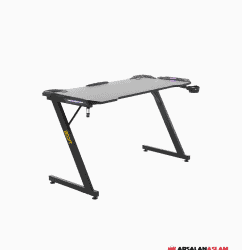Intel recently announced the launch of the 14th generation CPU, which was a big relief for many laptop users around the world. The 14th generation CPUs are known as Meteor Lake Chips, and the company puts a huge emphasis on performance and prioritizes energy efficiency. The launch date of the 14th generation laptop was announced as December 2023.
These CPUs also have P-cores and E-cores, which are known as Redwood Cove and Crestmot. The low-energy E-core is also integrated, which also has a positive impact on the overall system performance.
However, the company did not reveal any major information regarding the hardware improvements. So far, the CPU is known to contain 6 “P” and 8 “E” cores, and it will likely be a Core i7 or Core i9 configuration.
It is expected to improve performance and bandwidth in the CPU, providing 6% faster speed than its predecessors. It will also improve the boost clock, allowing users to perform better and help them track their tasks more efficiently.
Let’s find out more relevant details to help you understand 14th generation laptops.
Unlike previous CPUs
Previous processors had a traditional CPU and an add-on chip known as a PCH. Now, as for Meteor Lake, it will be divided into four chipsets which are I/O, SOC, Graphics and CPU. These chips will be bundled, helping Intel work and improve on each tile individually.
The interesting thing is that you can make the SOC and graphics tiles designed by Intel and the other two, SOC and graphics, are made by another company, TSMC.
Adding extra cores
The Meteor Lake 14 generation chip integrates low-power E-cores and has separate tiles for graphics, I/O, CPU and Soc. They are added to the SoC, which is separate from the others.
This means that the tile in the SoC will only be active when you’re doing light tasks like browsing the web, viewing online documents, or even streaming videos. Not only will it increase overall system performance, but it will also help improve battery life on 14th generation laptops.
Enhancement of Ray-tracing graphics
Graphics advancement is another significant aspect of this chip as it has XeHPG graphics technology that boosts graphics quality with advanced ray tracing support.
Some tests have been carried out and the results show that this chip provides better pixel blending and depth testing speeds than its predecessors. It can provide a great advantage to users who have demanding graphics requirements.
XeSS support in the Meteor Lake GPU helps improve image processing, leading to better visibility. Endurance gaming is another exciting feature of the chip that does not compromise battery life and allows gamers to participate in long games.
Thread director
Thread Director was first integrated into 12th generation chips. Its primary role was to route tasks to the “P” (power) section, which primarily functioned as a power-saving component. E-cores were used to perform more high-end tasks where more power was required from the chip.
In Meteor Lake, the role of the Thread Director has been changed so that it will now transfer your tasks to the low-end E-cores and then to the “P” section. Thanks to these improvements, the battery performance of the 14th generation notebooks will be significantly improved.
If you mostly do occasional tasks like writing simple documents or university assignments, the low-power (Efficient) “E” section might suit you. It can perform all tasks smoothly and consumes less battery.
AI support
As previously mentioned, Meteor Lake’s low-power E-cores are integrated into the SoC tile, which will also be part of the new NPU (Neural Processing Unit) with artificial intelligence. According to the company, the AI will be used to evaluate how people engage in daily routine activities, such as accessing a website, but will not be trained on real users. Rather, its machine learning technology collects data from test users and applies it to the average user.
The CPU, GPU, and AI NPU work together to run any AI application faster than either component could on its own. CPUs, GPUs, and NPUs were used individually, as well as various combinations of all three companies, to run the Stable Diffusion AI art generator. Images took 20 seconds to generate with lower power consumption, while Stable Diffusion only worked on the NPU. The same process took 11 seconds and more power when using the NPU and graphics card.
In addition to adding an AI NPU to its Meteor Lake processor, Intel is improving the integrated GPU. According to the manufacturers, it’s easier to “mix and match graphics performance” by creating a separate tile for the graphics card. To beat the integrated XE GPU found in earlier chips, the company is taking its standalone Arc GPUs and combining them with this CPU.
Additionally, Intel integrates eight ray-tracing units and eight Xe cores from the Arc A770 into the Meteor Lake GPU tile, which is impressive. To take advantage of this new feature, software developers must incorporate ray tracing support into their games; however, the chip’s integrated GPU will officially support ray tracing instead of a separate chip.
We should expect increased efficiency, faster clock speed and support for XeSS technology with the GPU chip. In addition, Endurance Gaming is also integrated into this CPU, allowing you to control how much power the system consumes using the Intel Arc Control power management application. This allows you to sacrifice frame rate in favor of longer battery life.
Final words
The release of Meteor Lake is exciting for many users around the world. However, we still have to see how the 14th generation laptops will be priced and how they will affect the local markets in different regions. You also need to make a purchase decision based on your affordability and requirements. But one thing is certain. This chip will surely be worth your money as it has top-notch features that will give you better performance.


